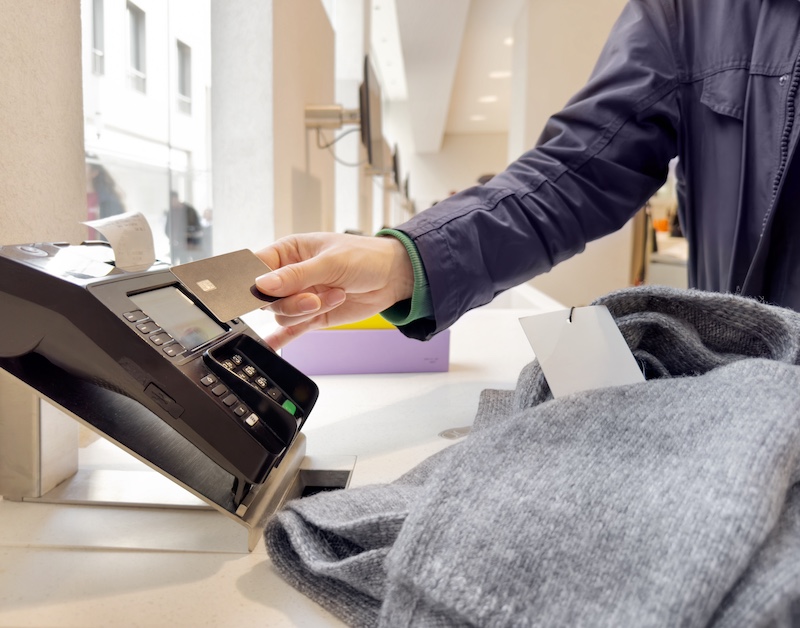Retail transformation isn’t just about the digital front-end, it’s being redefined at its very core. At the heart of this retail revolution is RFID— enabling a smarter, faster and more resilient retail ecosystem.
For years, RFID technology was primarily viewed as a tool for inventory management. However, that notion is changing – thanks to advancements in RFID, evolving consumer needs and increased need for real-time data. RFID serves as a critical enabler of enhanced customer experiences and improved business efficiency, whether by enabling real-time inventory visibility in stores and warehouses, or through powering smarter fitting rooms and frictionless checkouts.
As retailers look ahead to peak retail seasons, brands should consider RFID as a strategic upgrade. From inventory accuracy to real-time product visibility, RFID equips retailers with the ability to meet consumer expectations for instant, seamless experiences both online and in-store.
Why RFID is a Foundational Tech Today
Beyond inventory tracking and accuracy, RFID is proving to be crucial for other technologies such as artificial intelligence (AI) that rely heavily on data accuracy. It provides real-time, granular visibility into product movement, stock levels and customer interactions – supplying AI systems with high-quality data that retailers can use to generate meaningful insights.
Additionally, the technology is playing a crucial role in facilitating higher quality customer experiences by streamlining one of the most critical moments in the retail journey: checkout. As the final touchpoint a shopper has with a store, the checkout process can significantly influence overall satisfaction and brand perception. Long queues or slow service can quickly undo the benefits of a great in-store experience.
Self-Checkout Solution
An RFID-powered self-checkout solution, for instance, automatically scans all items in a shopper’s basket, immediately. Customers simply walk up to a kiosk, place their items in a designated zone and complete their purchase in seconds – without scanning individual barcodes. This significantly speeds up transactions and queuing, ensuring a completely frictionless and high-quality customer experience.
This also empowers staff to shift from transactional roles to more service-focused interactions. As a result, customers enjoy greater autonomy and speed, while retailers benefit from higher conversion rates.
What’s more, with RFID tags attached to every product, the risk of theft is minimized significantly. With its alarm-triggering capabilities, RFID can help retailers identify and mitigate shoplifting incidents, resulting in fewer losses and enhanced security at checkout.
The Strategic Role of RFID in Omnichannel Agility
RFID can enable staff to deliver seamless and accurate omnichannel offerings such as Buy Online, Pick Up In-Store (BOPIS) and ship-from-store, while being able to tailor customer interactions in real-time with accurate data at their fingertips. All of these are increasingly expected by modern shoppers.
Because RFID provides instant visibility into stock levels and item locations, employees can quickly locate products from anywhere in the store, ensuring fast and reliable order fulfilment. For example, when a customer places a BOPIS order, staff can instantly identify exactly where the item is – whether it’s on the shop floor, in the backroom, or in transit.
Additionally, by having access to real-time data via mobile devices or point-of-sale systems, staff can tailor interactions on the spot: recommending alternatives when items are unavailable, confirming product specifications, or reserving items at nearby stores. The level of agility that RFID provides can transform store associates into knowledgeable brand ambassadors who can deliver personalized service while supporting the operational demands of omnichannel retailing.
In an era where convenience and experience are key differentiators, RFID is proving essential in bridging operational efficiency with customer satisfaction. RFID transforms retail from guesswork to precision, enabling seamless operations and smarter, more responsive retailing. It is the backbone of modern retail tech.
Key Considerations for Successful RFID Adoption
From integration with existing systems and change management across store operations to upfront investment vs. long-term ROI, there are a few considerations for retailers before deploying RFID:
- System Integration: RFID must sync seamlessly with existing POS, ERP (enterprise resource planning) and inventory systems.
- Operational Change: Staff need surficial training and processes need reworking – from stock handling to checkout.
- Cultural Shift: Early staff buy-in is key; pilot programs can help ease transitions and flag issues early.
- Upfront vs. ROI: Tags, readers and setup require investment, but most retailers see ROI within 12–18 months.
As retail continues to evolve at pace, RFID stands out as a foundational technology that bridges operational excellence with elevated customer experiences. Retailers that embrace RFID today aren’t just investing in efficiency – they’re laying the groundwork for a smarter future.



